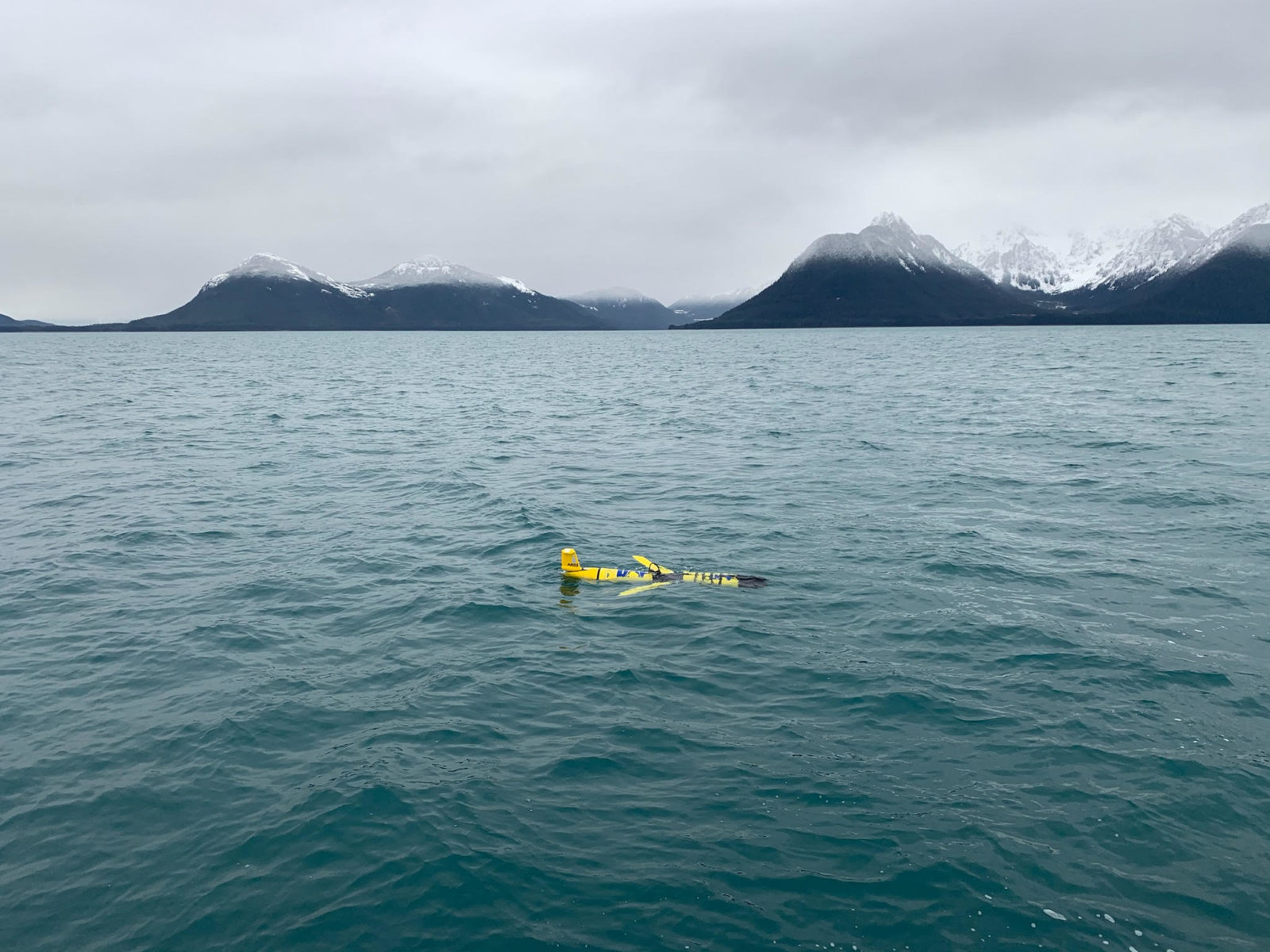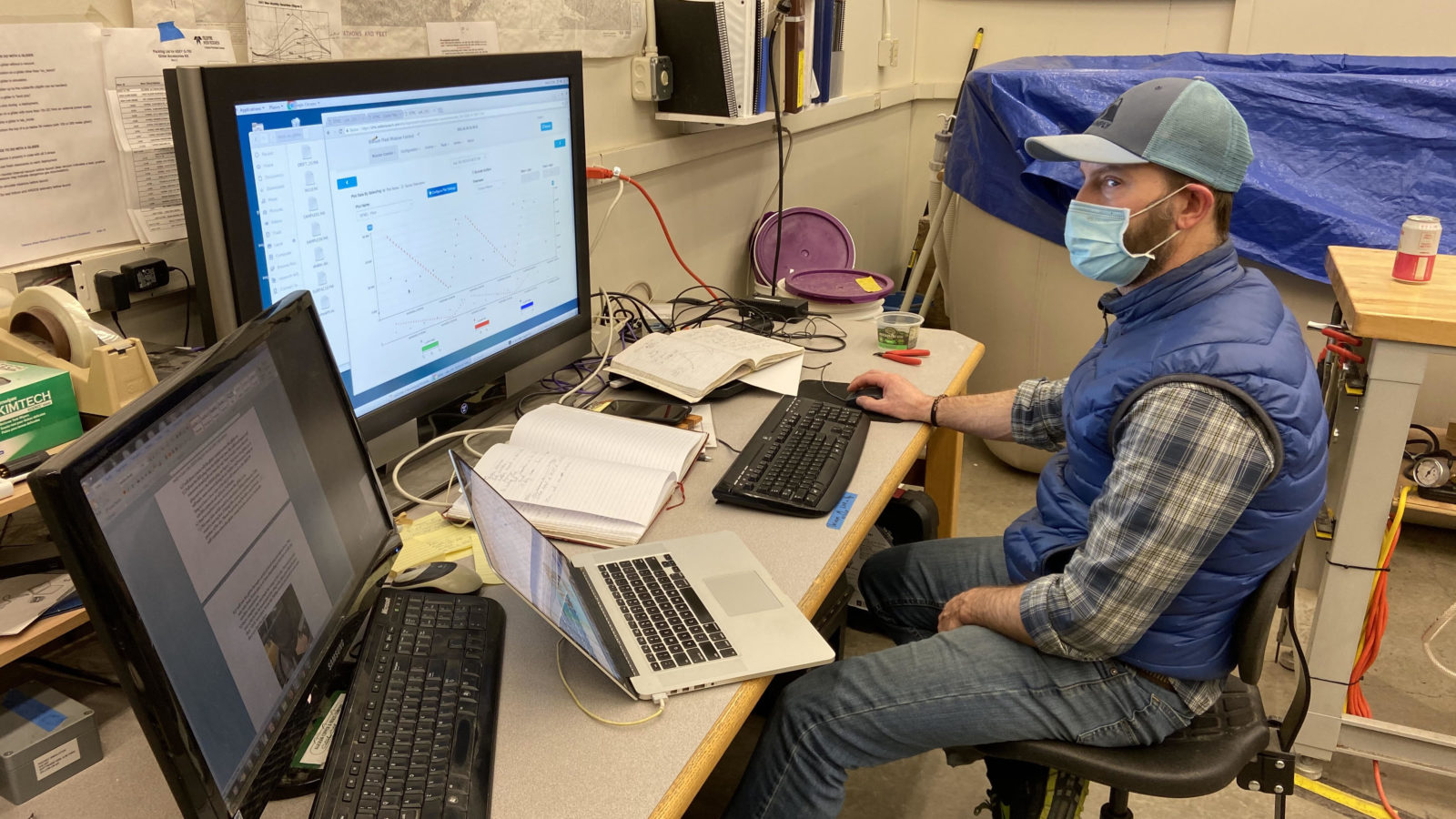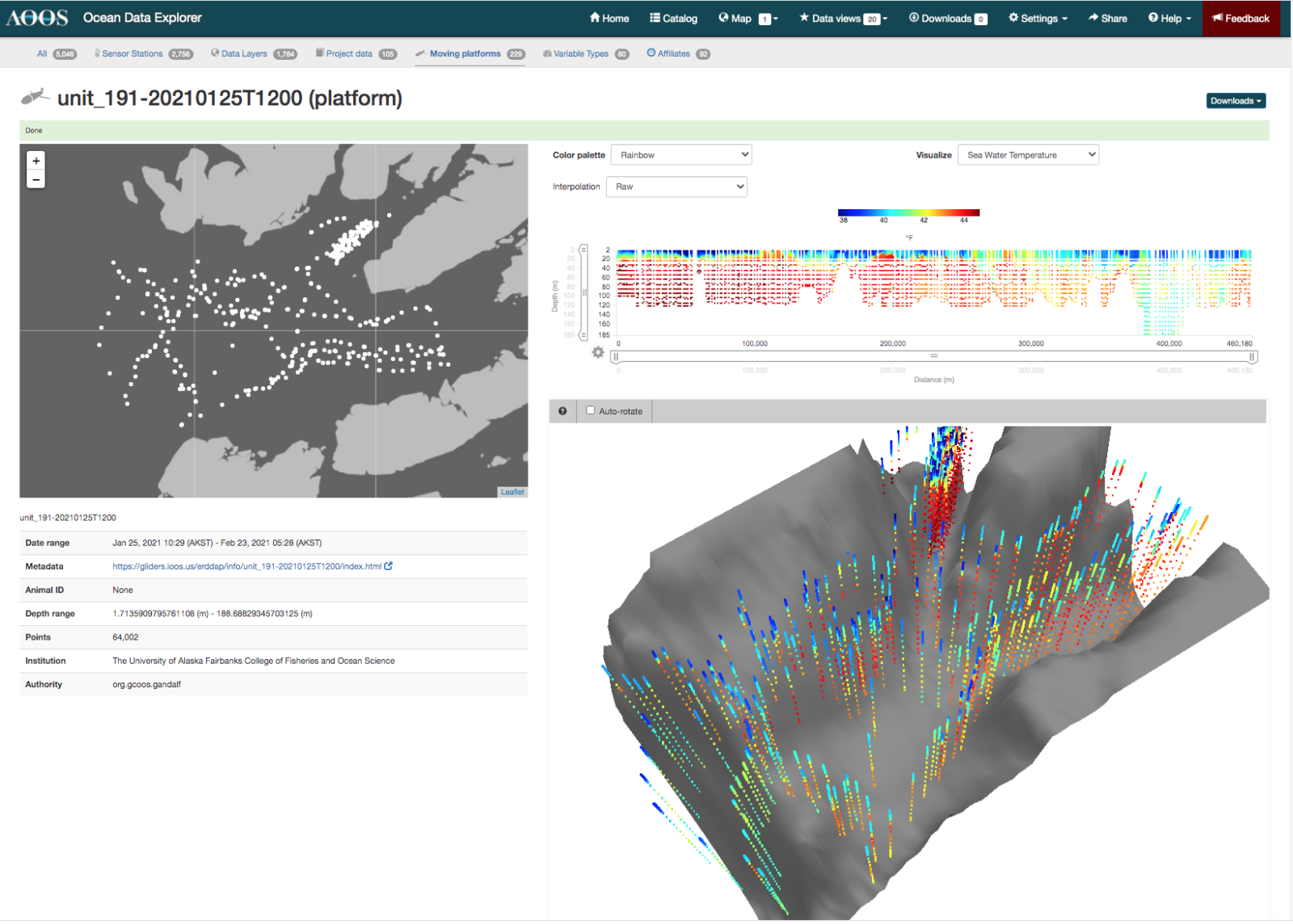Herring Glider Surveys in Prince William Sound
The University of Alaska Fairbanks-College of Fisheries and Ocean Science (UAF-CFOS) Glider Lab team, led by Hank Statscewich and Seth Danielson, launched the first AOOS-funded Ecosystem Approach to Fisheries Management glider mission in Prince William Sound (PWS) in January 2021.

The glider, nicknamed “Shackleton”, was outfitted with seven environmental sensors plus a receiver that listens for tagged fish. In this first year of operations, the Glider Team is exploring the feasibility of using gliders to detect tagged herring in collaboration with the Exxon Valdez Oil Spill Trustee Council’s Gulf Watch Alaska and Herring Research & Monitoring Program scientists Mary Anne Bishop and Rob Campbell of the Prince William Sound Science Center (PWSSC), and NOAA’s John Eiler. Within its first hour, the glider made real-time detections of fish tags that PWSSC mounted on a mooring for testing purposes and then found dozens over February-April. The glider is also listening for sharks tagged by a research project led by Markus Horning (Wildlife Technology Frontiers), though none were detected during this survey.

Seth Danielson said, “A ton of work over the past year has gotten us to this point, culminating in an adventurous late-night glider delivery to Valdez by Jordi Maisch (UAF), who drove the glider from Fairbanks and waited in the snow as road crews cleared avalanches in Thompson Pass.”
Following the first month-long mission, Hank Statscewich prepped Shackleton for a second PWS survey, during which aerial spotter flights showed large masses of herring spawn in the region while the glider team was detecting multiple tagged fishes. The third mission this spring – planned for late April into May “Will be an important test to see if we can fly Shackleton into Resurrection Bay from PWS without the coastal current carrying the glider toward Kodiak,” said Seth Danielson. “Success will open a lot of doors for a variety of future missions, deployment and recovery operations.”
Congratulations to the UAF Glider Team and PWSSC for pulling off this big step forward in our Alaska-based glider program. You can follow the location of the glider in real-time on the AOOS Data Portal when the glider is underway, and view the PWS Shackelton glider data on the AOOS Data Portal on the links for January and March 2021 surveys.


